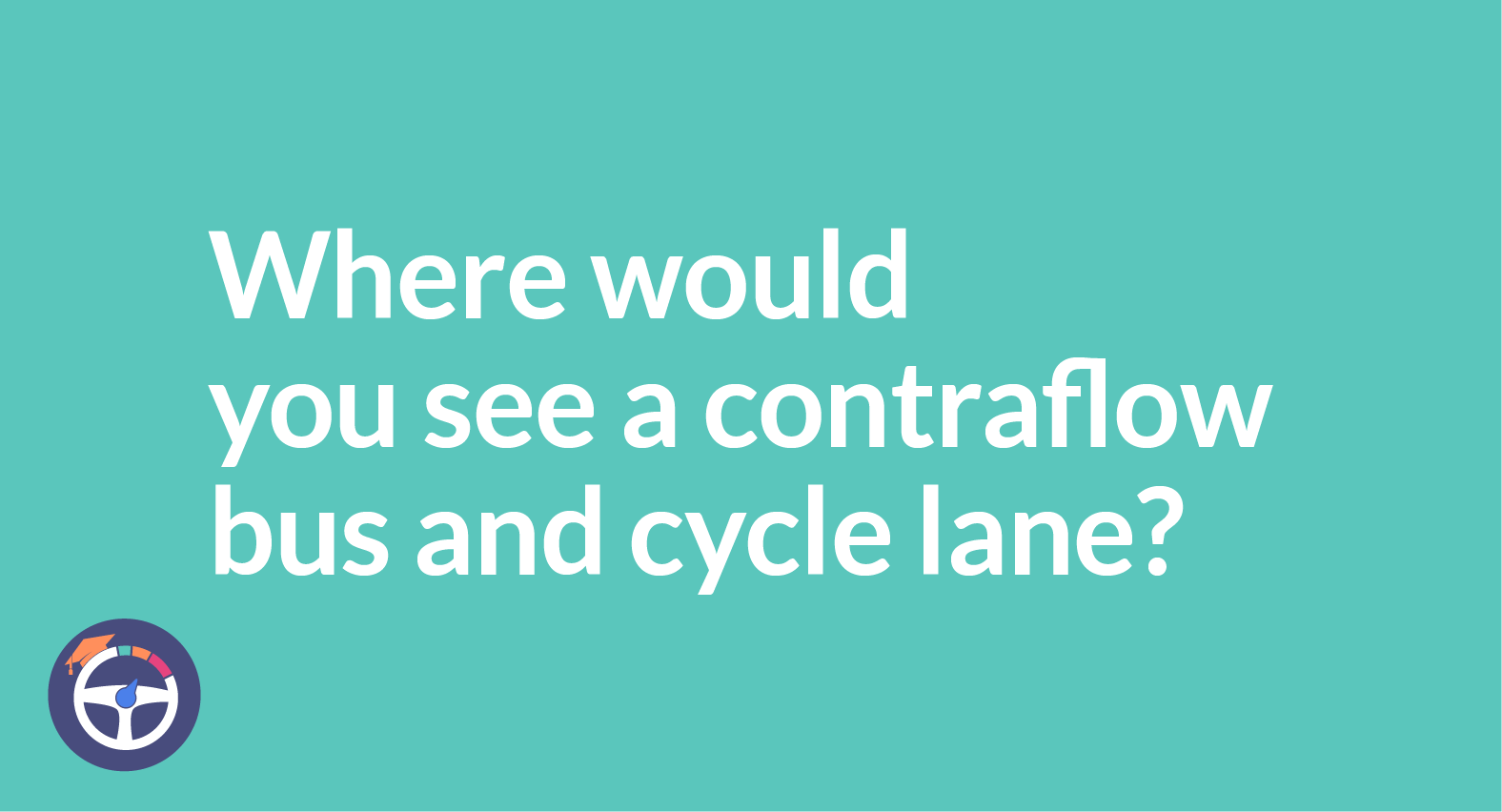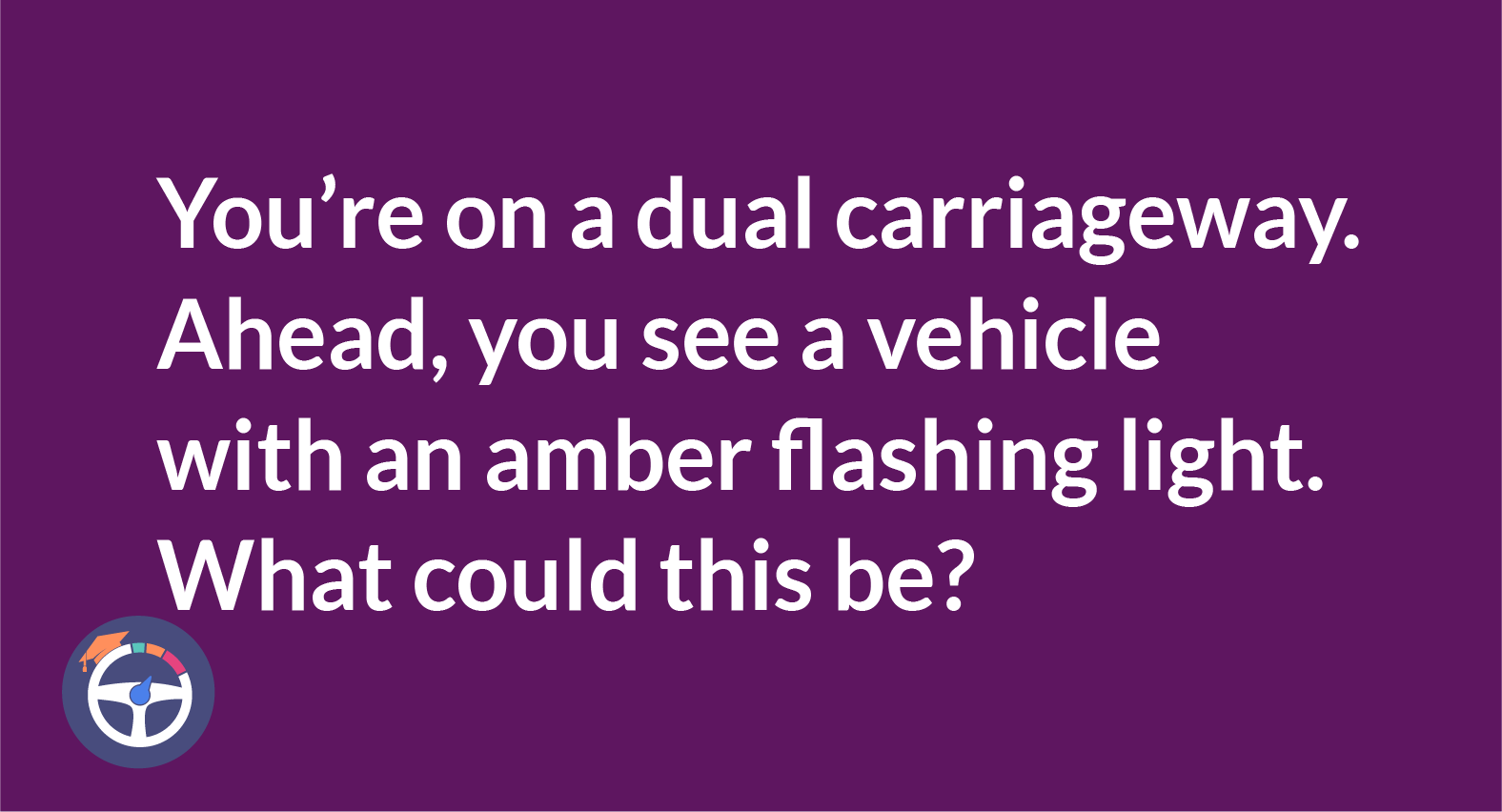Where Would You See A Contraflow Bus Lane And Cycle Lane?
A contraflow bus and cycle lane is typically found on a one-way street. The traffic permitted to use a contraflow lane travels in the opposite direction to traffic in the other lanes on the road.

Content
- Where Would You See A Contraflow Bus Lane And Cycle Lane?
- Bus Lane
- Cycle Lane
- Bus Lane Etiquette
- Cycling Guidelines
- Conclusion
- FAQ
Let's talk about roads and two special lanes that do more than just look pretty. The contraflow bus and cycle lane! These aren't just painted lines on the road. They're secret passages designed to make traffic smooth and keep everyone safe. But where do you find these special lanes? Read till the end to learn about where they are, why they matter, and the rules to follow.
Imagine this as your go-to guide for the UK Theory Test. We're here to help you figure out where would you see a contraflow bus lane and cycle lane. So, get ready for a simple breakdown, step by step.
Where Would You See A Contraflow Bus Lane And Cycle Lane?
In the intricate network of roadways, certain lanes serve unique purposes. It contributes to the efficiency and safety of traffic. Two such specialized lanes are the contraflow bus lane and the cycle lane. Let's highlight where these lanes appear and their significance on the road.
Bus Lane
A contraflow bus lane is a dedicated pathway for buses. It aims to streamline public transportation. Contraflow bus lanes are particularly interesting. They defy the flow of regular traffic, allowing buses to travel against the general direction of vehicle. Where might you encounter this distinct lane configuration?
City Centers:
In bustling city centers, contraflow bus lanes are common. They help buses navigate through dense urban traffic more efficiently.
Busy Arterial Roads:
Along busy arterial roads, where traffic congestion often prevails, contraflow bus lanes become crucial. They enable buses to move swiftly, reducing delays for both passengers and other road users.
Transit Hubs:
Near transit hubs, such as bus terminals or train stations, you're likely to find contraflow bus lanes. This design facilitates smoother transitions for buses entering or leaving these transportation hubs.
Cycle Lane
While bus lanes cater to public transport, cycle lanes prioritize the safety and convenience of cyclists. These lanes are demarcated for exclusive bicycle use. It promotes sustainable and healthy transportation options.
Urban Areas:
In urban settings, where the push for eco-friendly commuting is stronger, cycle lanes are prevalent. They provide a dedicated space for cyclists, ensuring their safety amidst city traffic.
Connecting Commuter Routes:
Cycle lanes often connect popular commuter routes. This ensures that cyclists have a continuous and safe pathway for their journeys.
Near Educational Institutions:
Around schools and universities, where cycling is a popular mode of transportation, cycle lanes are strategically implemented. This enhances safety for students who choose to bike to and from educational institutions.
Safety Measures and Rules
Understanding the locations of contraflow bus lanes and cycle lanes is just the beginning. It's equally important to be aware of the safety measures and rules associated with these lanes.
Bus Lane Etiquette:
Drivers should be vigilant in respecting bus lanes and yielding to buses entering or exiting contraflow lanes. Awareness of designated timings and restrictions is crucial.
Cycling Guidelines:
Cyclists, on the other hand, should adhere to cycling lane regulations. This includes following traffic signals, yielding to pedestrians when necessary, and staying within the designated cycling space.
Conclusion
In understanding the diverse landscapes of urban and suburban roads, recognizing contraflow bus and cycle lanes is vital. These contraflow bus and cycle lanes, with their unique configurations, contribute not only to the efficiency of traffic flow but also to the safety and sustainability of transportation systems. As you prepare for your UK Theory Test, keeping where would you see a contraflow bus lane and cycle lane in mind will undoubtedly enhance your understanding of road dynamics and safety protocols. Stay informed, and stay safe on the roads!
FAQ
1. Do contraflow lanes only exist in cities?
Nope! They can pop up in towns and suburbs too, especially on busy roads with lots of buses. Think school zones or commuter routes.
2. Can cyclists use contraflow bus lanes?
In some places, yes! Check the signs – sometimes bikes are allowed to share the contraflow lane with buses. But always be extra cautious and yield to the bigger guys.
3. Where do I find cycle lanes outside of city centers?
Keep an eye out near parks, canals, and scenic routes. Cycle lanes often hug these areas, making pedaling a peaceful pleasure.
4. Can cars ever drive in cycle lanes?
Rarely. Usually only for deliveries or emergencies. If you accidentally drift in, apologize profusely to any cyclists and scoot out ASAP!
5. Do I need a special license to use a cycle lane?
No, just your legs and a bike! They're open to everyone who wants to pedal safely and avoid traffic mayhem.
Remember, understanding where would u see a contraflow bus lanes benefits everyone on the road. So keep your eyes peeled, stay informed, and be a courteous driver (or cyclist)!


